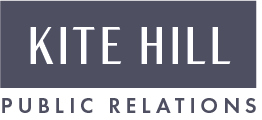In the super dynamic media, enterprise tech and advertising industries, the only thing that feels consistent in this current climate is….inconsistency. And while this “new normal” path is presenting tons of potholes along the way, there’s one constant that hasn’t changed: the need for our industry to rally around champions and trailblazers, celebrate the moments of success, continually learn from the best minds in our industry and participate in important conversations. So how is that possible with uncertainty around every bend?
The answer lies in virtual events. Here is a list of this season’s can’t-miss, best virtual events in the media, advertising and enterprise technology worlds that will keep you up-to-date and involved with the who’s who and what’s happening for 2020.
Bonus: Many of these events are more accessible than ever, with attendance either free or at a vastly reduced price.
Tech Crunch Disrupt
September 14-18, 2020
TechCrunch Disrupt offers attendees five days of non-stop online programming with two big focuses: founders and investors shaping the future of disruptive technology and ideas and startup experts providing insights to entrepreneurs. With almost 10,000 attendees from all around the world, hundreds of startups across a variety of categories get the chance to tell their stories to the masses.
Digiday Media Buying Summit
September 16-18, 2020
Unless you’ve been living under a rock and without wifi, you know it’s been a tough run for media agencies and the last few months have been tumultuous. This event will explore how agencies are changing the way they operate with remote working, the dreaded social platforms tumble, industry regulations, and ins and outs of brand safety – just to name a few. Digiday has always known how to curate a great conference and this one is no different.
Ad Age Next: Food & Beverage
September 22, 2020
Clearly a lot has evolved in the last few months, and Ad Age Next: Food & Beverage is here to take a bite out of the hottest topics in the industry, exploring the seismic shifts faced by food and drink marketers and restaurant operators, who were all forced to rethink their long-term strategies overnight.
Advertising Week #AW2020
September 29 - October 8, 2020
AW2020 is a reimagined virtual event for a global audience. Their agenda is purpose-built to bring the marketing, media, technology, and creative industries together to drive change. Attendees can look forward to riveting sessions from senior leaders, learning new skills, networking with new business leads, and gaining the tools and insights that can elevate your career. A-List speakers include Kevin Hart, Kristen Bell and LL Cool J, to name a few.
2020 GeekWire Virtual Summit
October 12-13, 2020
The 2020 GeekWire Summit will be a fully immersive virtual event. It will feature in-depth fireside chats, panel discussions and power talks with some of the top leaders in technology, business and entrepreneurship. Speakers to be announced in the coming weeks and we’ll be watching that closely – stay tuned!
Adweek Convergent TV Summit
October 13, 2020
As the supply of streaming services increases, so does the demand for unique content and marketing solutions to attract and engage new audiences. Adweek’s second Convergent TV Summit will explore the ways in which the television, advertising and media-buying industries have evolved along with viewer consumption as a result of this new landscape.
Modern Retail Summit
October 14-16, 2020
Gone are the days when retailers sold primarily through brick and mortar, and online was an afterthought. Today’s successful retailers often have to juggle a variety of selling channels -- from your own website and stores to wholesale retailers to online marketplaces. This event will make sure attendees walk away knowing where to invest their time and money in the future of retail. Produced by Digiday’s crackerjack team, speakers will be announced in the coming weeks.
WSJ Tech Live
October 19-21, 2020
Like many major media outlets, the Wall Street Journal is reimagining the event experience, bringing the “Magic of Laguna” (their previous IRL location) to the living room for their most ambitious WSJ tech live yet. Unscripted interviews with game-changers around the globe, exclusive first-look demos, a new spin on networking — it’s all part of a multi-platform program that will deliver one shared moment where tech’s most prominent headlines are discussed, debated and made. Speakers include top executives from the biggest tech companies, including Snap and Intel.
Communications Week
October 19-23, 2020
Communications Week 2020 is a week-long event series that traditionally brings together top professionals from the marketing, media and communications industries to talk about the most pressing issues and topics. This year’s conference is not only virtual, it’s free. And the theme is Connections - and with that, the event is going to embrace all of the new ways of connecting and doing business globally. Full disclosure, Communications Week was founded by Kite Hill PR Founder and CEO Tiffany Guarnaccia and the Kite Hill team plays a big part in its curation and production.
2020 ANA Masters of Marketing
October 21-23, 2020
As we all know, the marketing and advertising industry is facing unique and complex challenges that require creative thinking and collective action. At the 2020 ANA Masters of Marketing Conference: A Virtual Experience, CMOs from leading brands will share their inspirational strategies and approaches to help brands and businesses navigate these difficult times and drive sustained success.
Digiday Future of TV Summit
November 4-6, 2020
At the Digiday Future of TV Summit, the top brand and agency executives will discuss the evolution of television advertising and how leaders in the industry are making their TV investments work. Past speakers consisted of big-name brand and agency executives. The 2020 speaker line-up is on the horizon.
Web Summit
December 2-4, 2020
Streaming under six general themes, the Web Summit will feature some of the most renowned speakers and companies in areas from software development, medtech, marketing, the future of work and more.
- Talia Firenze, Account Associate
